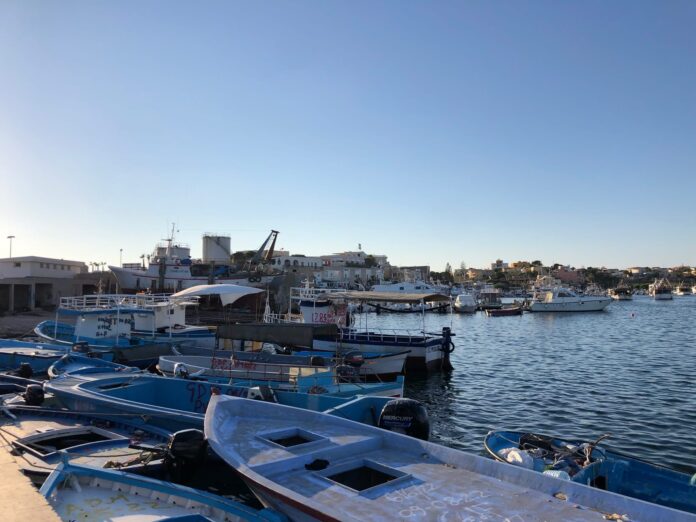Refugees and Migration
“You shall also love the stranger, for you were strangers in the land of Egypt.” Deuteronomy 10:19
Special Calendar Dates
- June 20 is World Refugee Day
- December 18 in International Migrants Day
 Of the 25.9 million refugees in the world today, 2.6 million have been “warehoused,” in camps or segregated settlements while many more live in urban areas in poverty or in informal housing. In camps, refugees live in crowded conditions in some of the most remote and inhospitable living conditions. Refugees are not allowed to grow their own food in the camps. Nor are they allowed to earn an income for their labor in most host countries. They survive on meager food rations and water that is trucked in or wells which are dug for them. Waiting in line for water is a major activity of the day. Tents and temporary structures become permanent homes. Safety is not assured. Refugee camps are not safe places to raise a family and yet many children are born there. While refugees wait for the opportunity to return home, locally integrate or be resettled, they stagnate, become dependent, lack stimulation, lose motivation and even hope resulting in a tremendous waste of human potential.
Of the 25.9 million refugees in the world today, 2.6 million have been “warehoused,” in camps or segregated settlements while many more live in urban areas in poverty or in informal housing. In camps, refugees live in crowded conditions in some of the most remote and inhospitable living conditions. Refugees are not allowed to grow their own food in the camps. Nor are they allowed to earn an income for their labor in most host countries. They survive on meager food rations and water that is trucked in or wells which are dug for them. Waiting in line for water is a major activity of the day. Tents and temporary structures become permanent homes. Safety is not assured. Refugee camps are not safe places to raise a family and yet many children are born there. While refugees wait for the opportunity to return home, locally integrate or be resettled, they stagnate, become dependent, lack stimulation, lose motivation and even hope resulting in a tremendous waste of human potential.
In 2019, the UCC and Disciples both passed resolutions called, “Addressing the State of Global Forced Migration.” The resolutions call on both denominations to pray and learn about global forced migration, to take actions related to U.S. policy, and to support global and domestic partners engaged in response. The resolutions also affirm our rejection of attitudes, discourse, and actions that discriminate based on any aspect of identity.
Refugee Facts (UNHCR)
- There were 26 million refugees worldwide in 2019, 20.4 million under the mandate of UNHCR. The other 5.6 million Palestinian refugees are registered with the United Nations Relief and Works Agency (UNRWA).
- During the year, conflict and persecution forced an average of 37,000 persons per day to leave their homes and seek protection elsewhere, either within the borders of their countries or in other countries.
- In 2019, the country hosting the largest number of refugees is Turkey, with 3.6 million refugees. Syria is the biggest source country. 68% of all refugees come from just 5 countries: Syria, Venezuela, Afghanistan, South Sudan, and Myanmar.
- In 2019, 52% of refugees were under 18 years old. Refugee women and girls account for around half of the refugee population.
Resources on Refugees and Migration
- Global Ministries partners working with refugees, migrants, and immigration issues
- Global Ministries Refugee Journey: Syria Curriculum
- World Refugee Day 2023 “Finding Freedom” worship service by Week of Compassion and UCC’s Refugee and Migration Ministries. Full service on YouTube and video segments plus the bulletin on the Week of Compassion website.
- “Addressing the State of Global Forced Migration” – UCC Resolution, Disciples Resolution
- Interfaith Immigration Coalition 2018 Advent and Epiphany Devotional and other religious resources
- Interfaith Immigration Coalition Toolkits
- Disciples of Christ Refugee & Immigration Ministries
- United Church of Christ Refugee Ministries
- Church World Service
- Interfaith Immigration Coalition
Sabeel Wave of Prayer – Week of Dec. 15, 2025
During the last week of advent starting on December 21st, many churches around the world will…
Read MoreFollowing a shipwreck near Lampedusa, Mediterranean Hope’s coordinator states, “Without legal channels, more lives will be lost”
[The following article was originally posted by the Federation of Protestant Churches in Italy…
Read MoreSabeel Wave of Prayer: Week of June 2, 2025
Hundreds took part in an interfaith peace march organized by Rabbis for Human Rights, with…
Read More

